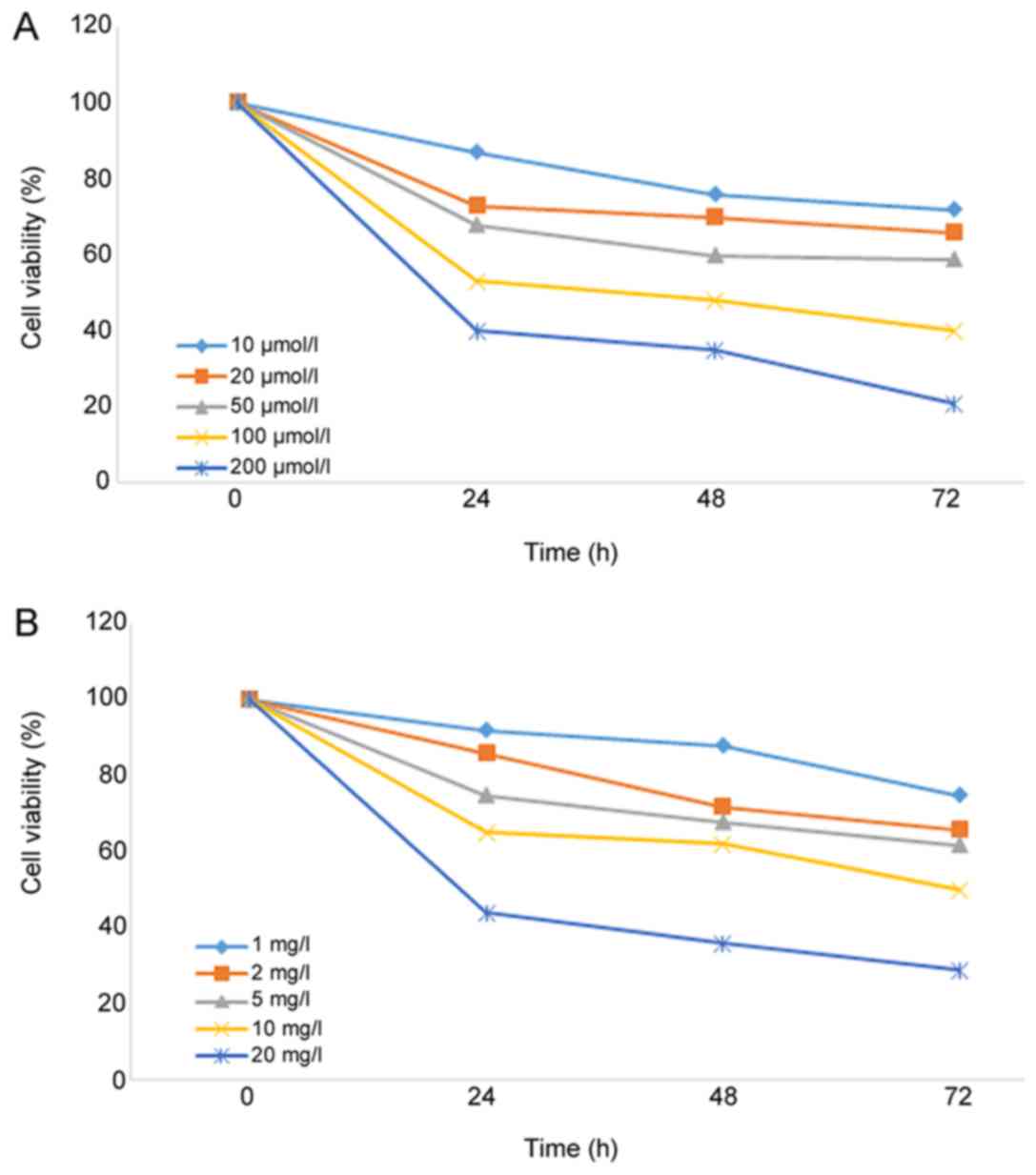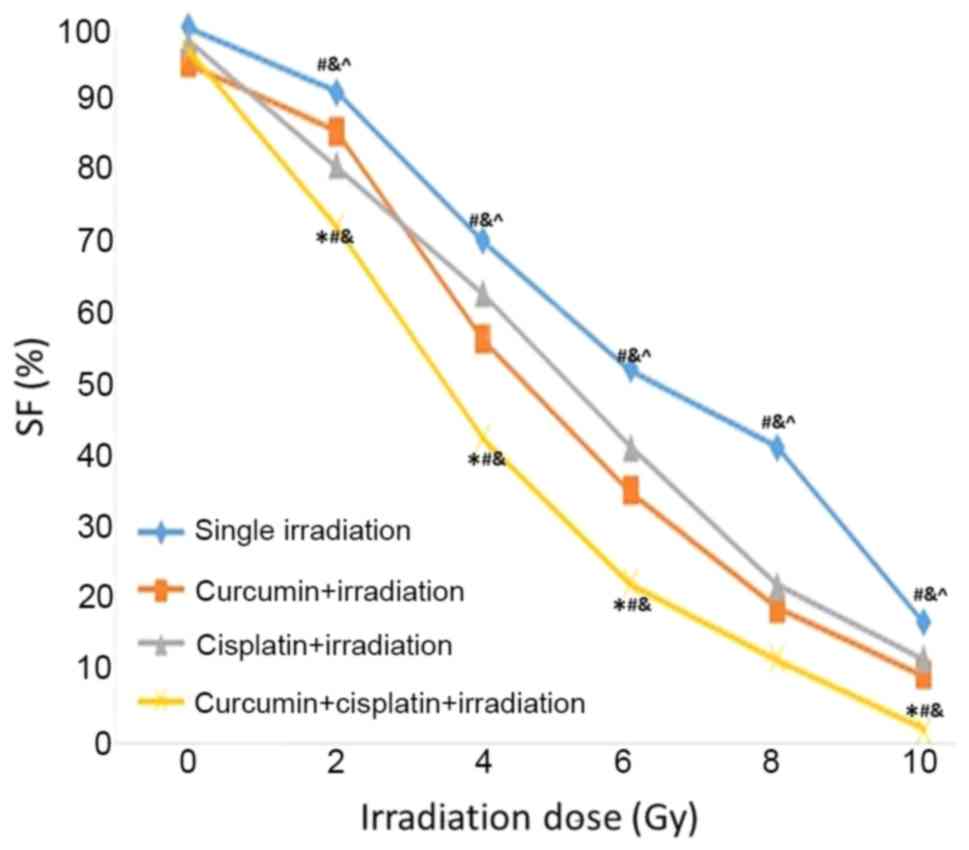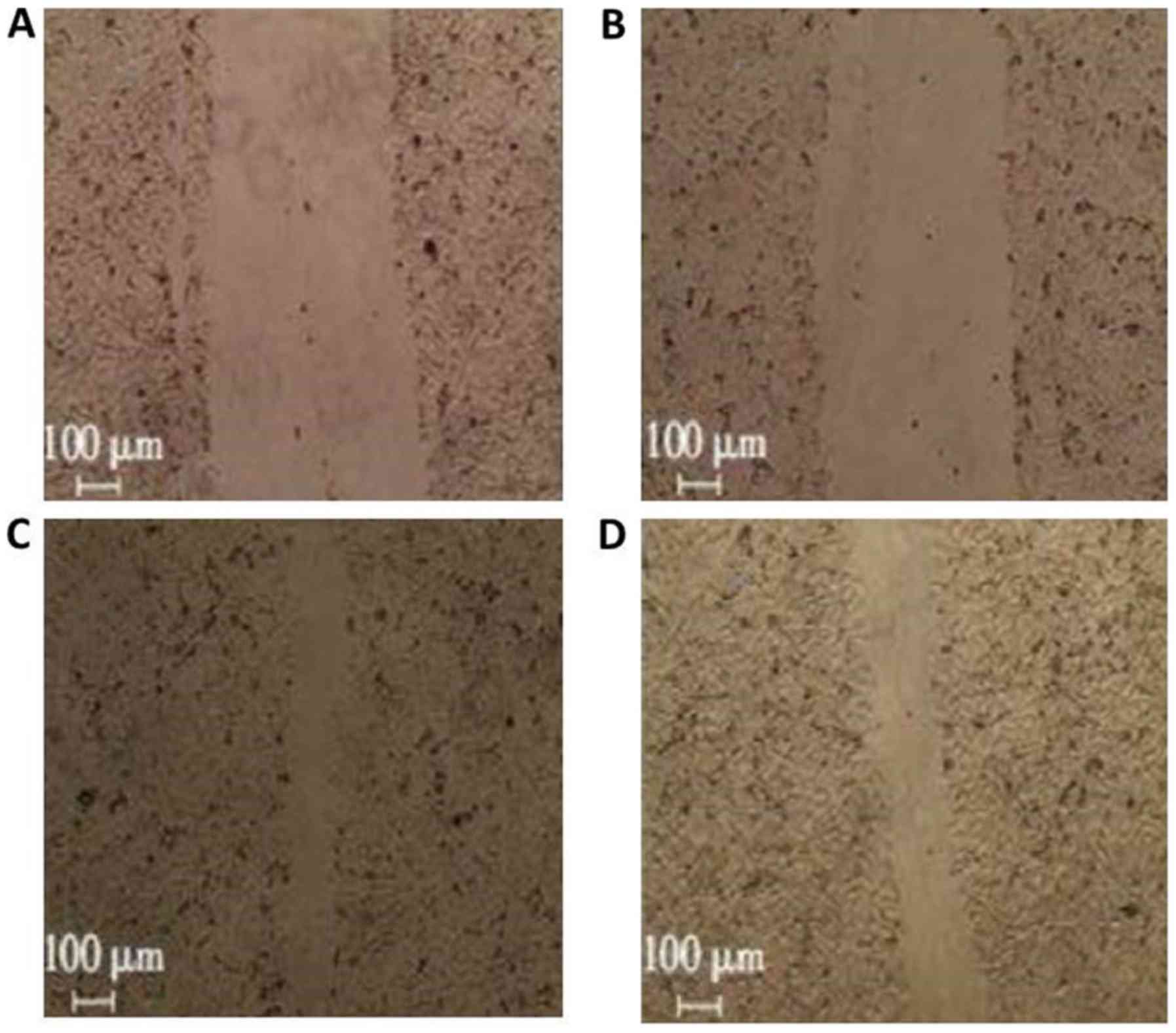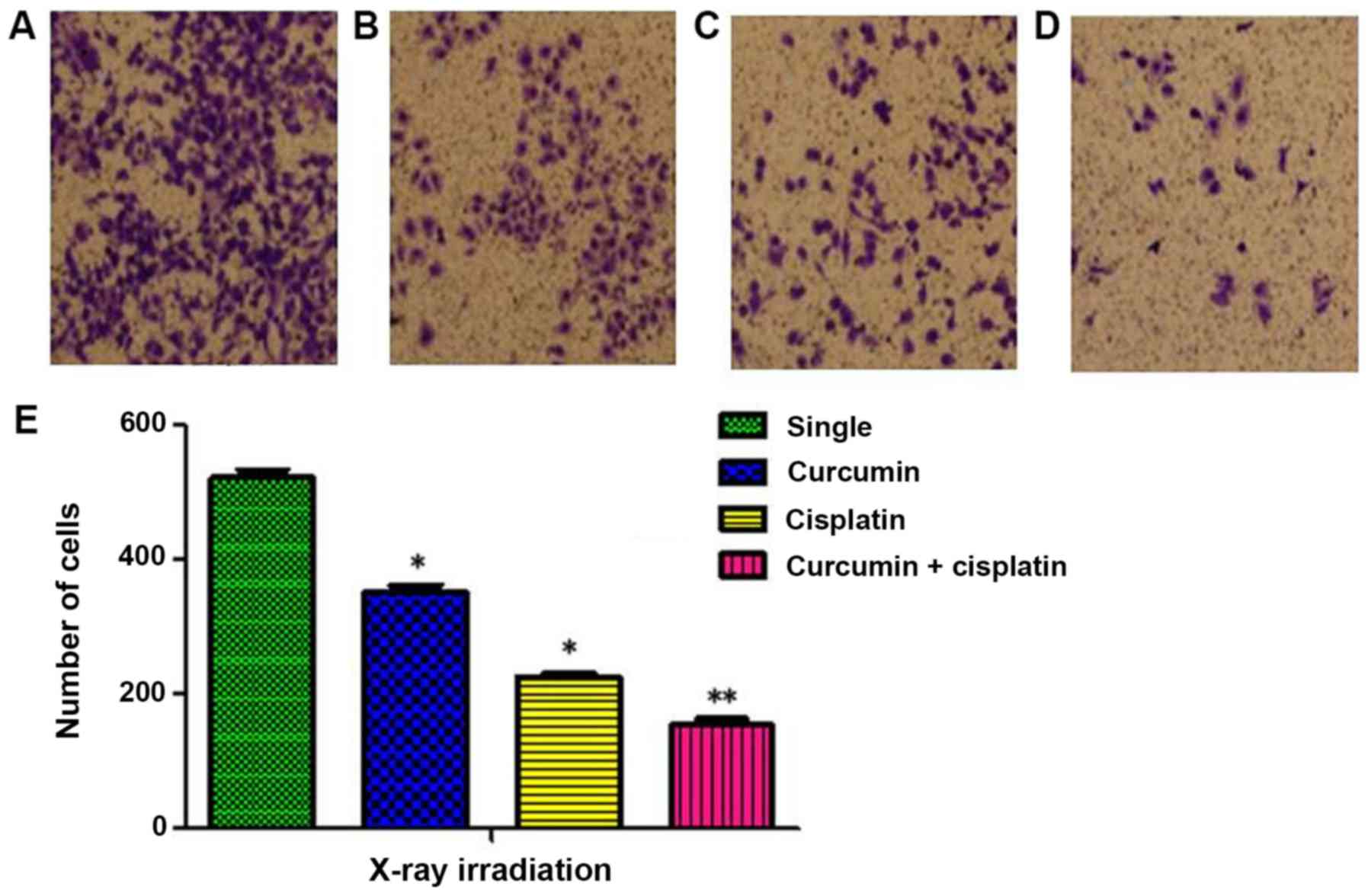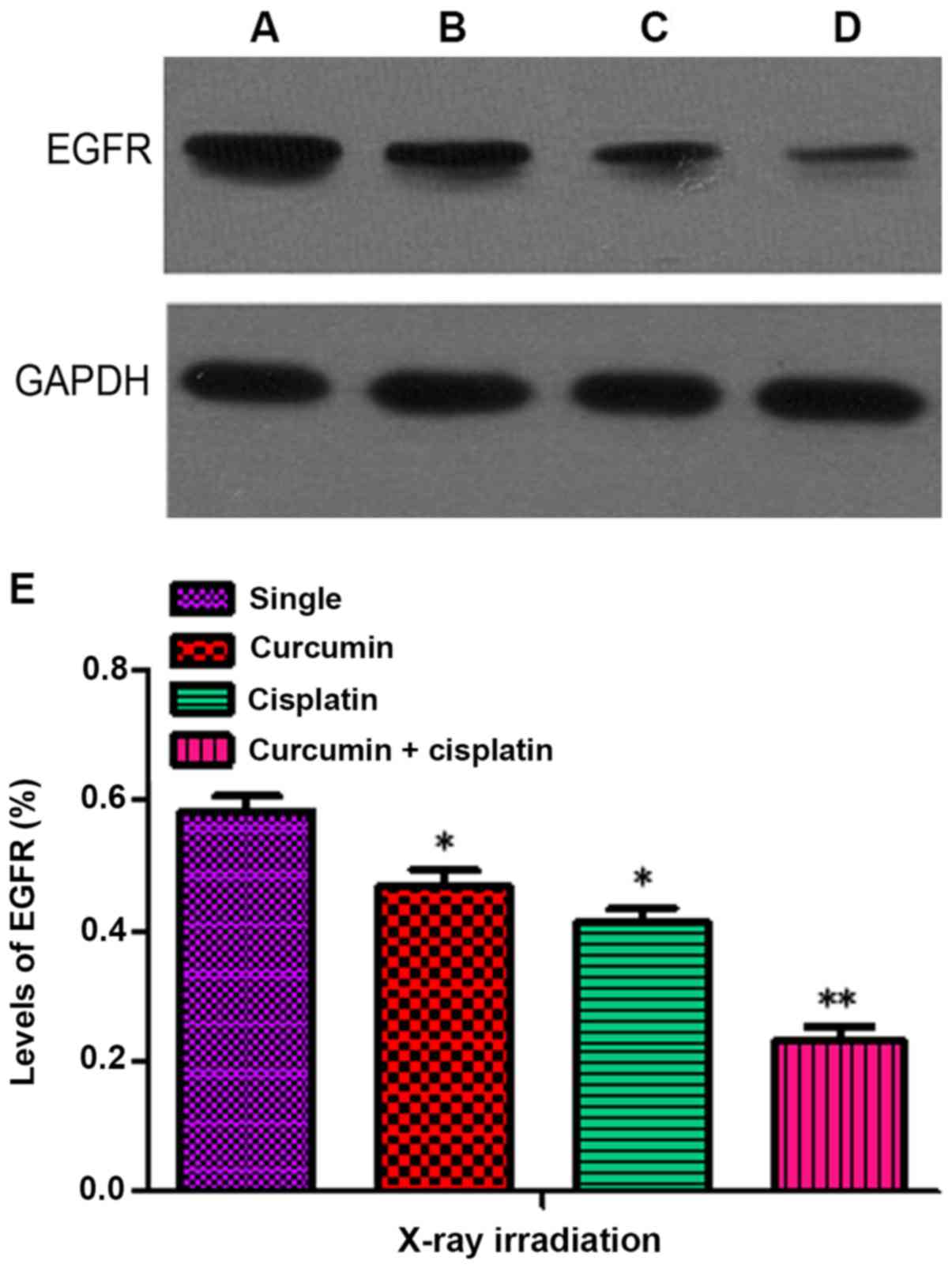|
1
|
Zhang NN: Investigation on target therapy
and resistance mechanism in non-small cell lung cancer. PhD
dissertation. Peking Union Med College. (Beijing, China). 2016.
|
|
2
|
Zhao H, Gu J, Hua F, Xu H, Li L, Yang B,
Han Y, Liu S and Hong S: A meta-analysis of the timing of chest
radiotherapy in patient with limited-stage small cell lung cancer.
Zhongguo Fei Ai Za Zhi. 13:892–897. 2010.(In Chinese). PubMed/NCBI
|
|
3
|
Kimple RJ: Strategizing the clone wars:
Pharmacological control of cellular sensitivity to radiation. Mol
Interv. 10:341–353. 2010. View Article : Google Scholar : PubMed/NCBI
|
|
4
|
Kang SN, Wang ZC and Li YB: Curcumin
protects human malpighian cell by oxidative damage of ultraviolet
light. Chin J Gerontol. 28:1688–1690. 2008.(In Chinese).
|
|
5
|
Huang HY, Wang Y, Chen FX, Liu JQ, Zhou ZH
and Zhang J: Study on the induction of human tolerogenic denfritic
cells by curcumin. Chin J Immunol. 27:611–615. 2011.(In
Chinese).
|
|
6
|
Song LP: Research progress of curcumin
treating atherosclerosis cardiovascular disease. Med Sci J Cent
South China. 41:417–421. 2013.(In Chinese).
|
|
7
|
Lev-Ari S, Starr A, Katzburg S, Berkovich
L, Rimmon A, Ben-Yosef R, Vexler A, Ron I and Earon G: Curcumin
induces apoptosis and inhibits growth of orthotopic human non-small
cell lung cancer xenografts. J Nutr Biochem. 25:843–850. 2014.
View Article : Google Scholar : PubMed/NCBI
|
|
8
|
Li X, Xie W, Xie C, Huang C, Zhu J, Liang
Z, Deng F, Zhu M, Zhu W, Wu R, et al: Curcumin modulates
miR-19/PTEN/AKT/p53 axis to suppress bisphenol A-induced MCF-7
breast cancer cell proliferation. Phytother Res. 28:1553–1560.
2014. View
Article : Google Scholar : PubMed/NCBI
|
|
9
|
Hong JM, Park CS, Nam-Goong IS, Kim YS,
Lee JC, Han MW, Choi JI, Kim YI and Kim ES: Curcumin enhances
docetaxel-induced apoptosis of 8505C anaplastic thyroid carcinoma
cells. Endocrinol Metab (Seoul). 29:54–61. 2014. View Article : Google Scholar : PubMed/NCBI
|
|
10
|
Cao H, Diao LM and Xia D: Effects of
curcumin combined with cisplatin on the proliferation and apoptosis
of human lung cancer cell line A549 in vitro. Med J Wuhan Univ.
29:213–217. 2008.
|
|
11
|
Klinger NV and Mittal S: Therapeutic
potential of curcumin for the treatment of brain tumors. Oxid Med
Cell Longev. 2016:93240852016. View Article : Google Scholar : PubMed/NCBI
|
|
12
|
Jamil QUA, Jaerapong N, Zehl M,
Jarukamjorn K and Jäger W: Metabolism of curcumin in human breast
cancer cells: Impact of sulfation on cytotoxicity. Planta Med.
83:1028–1034. 2017. View Article : Google Scholar : PubMed/NCBI
|
|
13
|
Hassan WA, Yoshida R, Kudoh S, Hasegawa K,
Niimori-Kita K and Ito T: Notch1 controls cell invasion and
metastasis in small cell lung carcinoma cell lines. Lung Cancer.
86:304–310. 2014. View Article : Google Scholar : PubMed/NCBI
|
|
14
|
Eke I, Sandfort V, Storch K, Baumann M,
Röper B and Cordes N: Pharmacological inhibition of EGFR tyrosine
kinase affects ILK-mediated cellular radiosensitization in vitro.
Int J Radiat Biol. 83:793–802. 2007. View Article : Google Scholar : PubMed/NCBI
|
|
15
|
Eke I, Schneider L, Förster C, Zips D,
Kunz-Schughart LA and Cordes N: EGFR/JIP-4/JNK2 signaling
attenuates cetuximab-mediated radiosensitization of squamous cell
carcinoma cells. Cancer Res. 73:297–306. 2013. View Article : Google Scholar : PubMed/NCBI
|
|
16
|
Rego RL, Foster NR, Smyrk TC, Le M,
O'Connell MJ, Sargent DJ, Windschitl H and Sinicrope FA: Prognostic
effect of activated EGFR expression in human colon carcinomas:
Comparison with EGFR status. Br J Cancer. 102:165–172. 2010.
View Article : Google Scholar : PubMed/NCBI
|
|
17
|
Boross P, Lohse S, Nederend M, Jansen JH,
van Tetering G, Dechant M, Peipp M, Royle L, Liew LP, Boon L, et
al: IgA EGFR antibodies mediate tumour killing in vivo. EMBO Mol
Med. 5:1213–1226. 2013. View Article : Google Scholar : PubMed/NCBI
|















